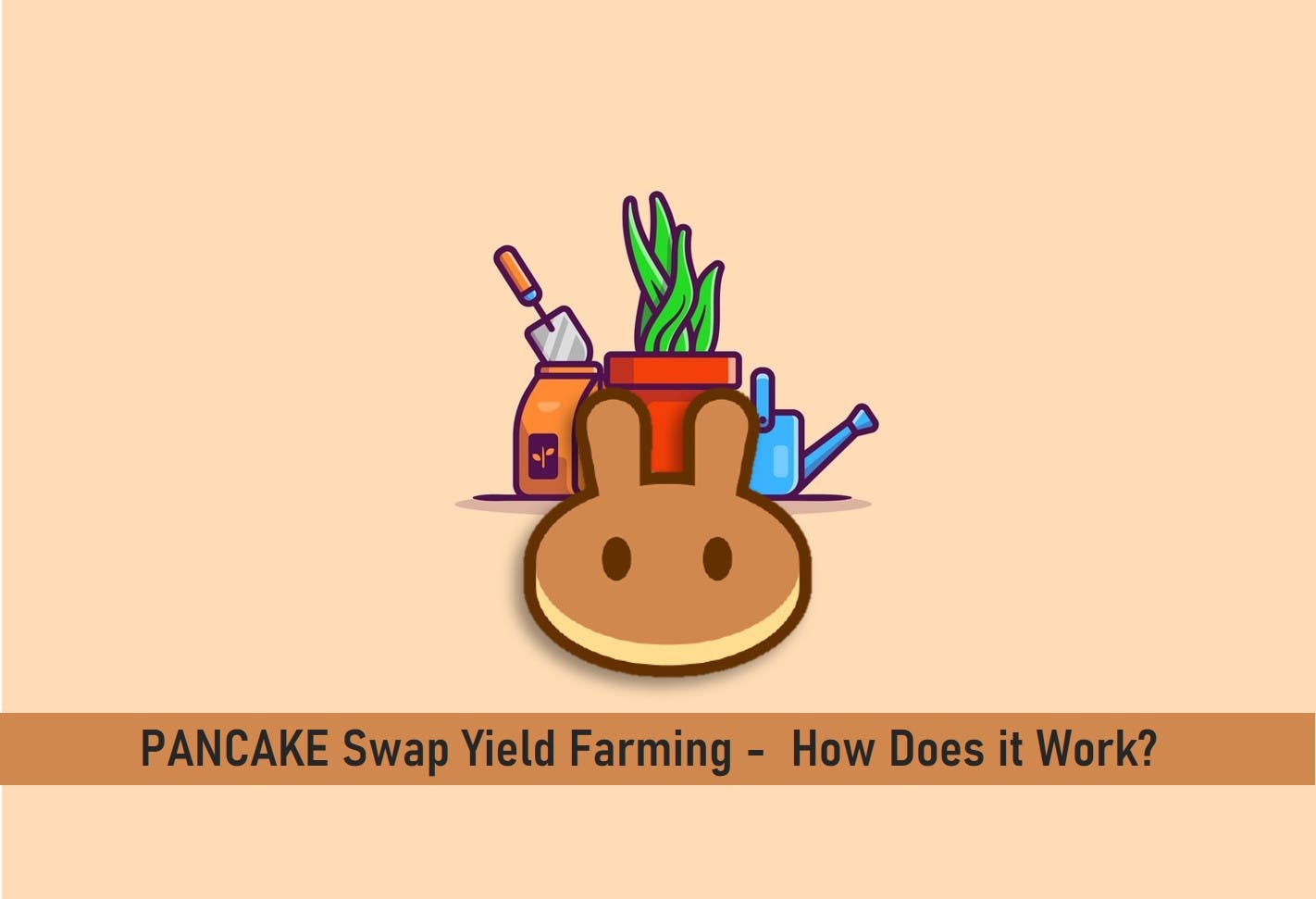
PancakeSwap is a relatively new platform. It was launched in mid-September 2020 on BSC as a clone of SushiSwap as PancakeSwap yield farming went live on September 22 2021 but offering swaps against BEP-20 tokens instead of the ERC-20 standard.
As with most platforms launched with a lot of promotion from Binance, PancakeSwap touted fast and cheap trading at a time when ETH transaction fees were very expensive.

Key Takeaways
•PancakeSwap derives its liquidity from farmers who place tokens in staking in exchange for reduced transaction fees
•PancakeSwap has a governance token called CAKE.
•PancakeSwap appears to be a strong competitor to some of the highest-yielding growing protocols in the space today.
PancakeSwap does exactly the same as SushiSwap, but with the advantage of being backed by a huge centralized exchange. There are thus a DEX, an AMM (automated market maker), farms / pools, and a native token called CAKE.
SEE ALSO: How to Fix Insufficient Output Amount Error On Pancakeswap
SEE ALSO: How to Create a PancakeSwap Token
SEE ALSO: How to Mine PanCake on UnMineable
Binance had heavily promoted the platform, but there were little cash and few tokens that people wanted to trade. Uniswap was therefore still the leader.
Yield Farming went live on September 22, 2020, and after the first twelve hours, the total locked-in value peaked at $ 35 million. By comparison, Uniswap’s total blocked value (TVL) at the time was $ 1.8 billion.
PancakeSwap wasn’t the only food-themed DeFi farm to launch on BSC, with BurgerSwap and BakerySwap also arriving there the week before.
As ETH’s transaction fees continued to skyrocket in 2021, peaking at over $ 40 for an average transaction at the end of February, the popularity of AMM on faster chains has grown, also increased, especially for newcomers to the DeFi scene.
SEE ALSO: All You Need to Know About ETHPad Tokens
New Tokens
Much like its predecessor SushiSwap, PancakeSwap derives its liquidity from farmers who place tokens in staking in exchange for reduced transaction fees for the specific pool in which they have provided liquidity.
Every time someone trades on PancakeSwap, the trader pays a commission of 0.2%, of which 0.17% is added to the liquidity pool of the swap pair they traded on.
Like most DeFi protocols, PancakeSwap has a governance token called CAKE. It can be obtained by staking liquidity pool (LP) tokens at a number of farms on the platform.
LP tokens, called FLIP on the exchange, are obtained when liquidity is provided through token pairs such as BUSD / BNB. For example, users who deposited CAKE and BNB into a liquidity pool received CAKE-BNB FLIP tokens.
The supplier, or the farmer, gets an equivalent amount of tokens when they are staked, and these can then be deposited into other pools to earn the CAKE asset.
These CAKE tokens can also be “staked” in syrup pools, which offer staking for a whole range of obscure BEP-20 tokens such as DITTO, DUSK, DEXE, WATCH, BUX, ALICE, etc.
PancakeSwap Yield Farming and How it Works
Yield agriculture, or liquidity mining, is a term used in DeFi to describe the process of strategizing for the movement of funds between multiple smart contract-based DeFi lending protocols to maximize returns.
The returns come from the Annual Percentage Yield (APY) obtained from loan and transaction fees. Additionally, DeFi implements an element of game theory by rewarding governance tokens to incentivize users of the protocol.
These token rewards of governance combined with high APY levels and effective yield maximization are the essence of yield farming.
Users lock cryptocurrencies as collateral within a DeFi protocol, which then allows them to obtain a cryptocurrency loan. This loan can be used on various DeFi platforms to “reap” the best returns available.
Users must hold secured debt positions (CDP) to stay in the game. If token prices fluctuate, interest rates change, or a group encounters a problem, users run the risk of liquidation.
This essentially means that your funds are gone. To cover the losses created by such volatility, CDPs are automatically settled if the collateral behind them falls below a certain threshold.
Yield farming is more complex, and requires active involvement, but allows the user to maintain their position in other tokens while passively receiving gains.
For a particular farm on the platform, the user must enter the LP (Liquidity Provider) token specific to the desired farm token. After blocking the funds and receiving the LP tokens, the user can put them into the farm to produce more CAKE.
The strategy works as a double stake or as a loan to generate profit in case the price of the LP token increases. Investors use their own personal strategies to manage yield farming, but a basic guide can be found on the PancakeSwap page.
There is also a lottery on the platform, the ticket of which costs 1 CAKE. The draw is always a sequence of 4 numbers, each randomly chosen between 1 and 14. The maximum prize, if the player hits the exact sequence, is 50% of the entire lottery prize pool.
Frequently Asked Questions (FAQ)
1. How do Yield Farms Work?
Yield agriculture, or liquidity mining, is a term used in DeFi to describe the process of strategizing for the movement of funds between multiple smart contract-based DeFi lending protocols to maximize returns.
2. Is PancakeSwap Safe?
PancakeSwap is audited by CertiK, one of the most reputable smart contract auditors in this space. However, there are always risks involved in using these platforms, such as mistakes, that could result in the loss of funds.
Final Thoughts
Today, there are many yield agriculture projects in the space and it can be difficult to assess where to focus. And when selecting a platform to use, it is important to look beyond the promised APY.
On several fronts, PancakeSwap appears to be a strong competitor to some of the highest-yielding growing protocols in the space today.
Since the platform is built on top of the Binance Smart Chain, it has an advantage because this means that its blockchain network is faster than others in the space, as it features around 3-5 seconds of block time with its Proof-of model Stake.
On top of that, there are other profit-generating opportunities with PancakeSwap. Beyond yield farming, users have the opportunity to participate in lotteries collect NFTs, and launch fundraising rounds through IFO.
These are features that many other popular yield farming projects don’t yet offer.
Read More




